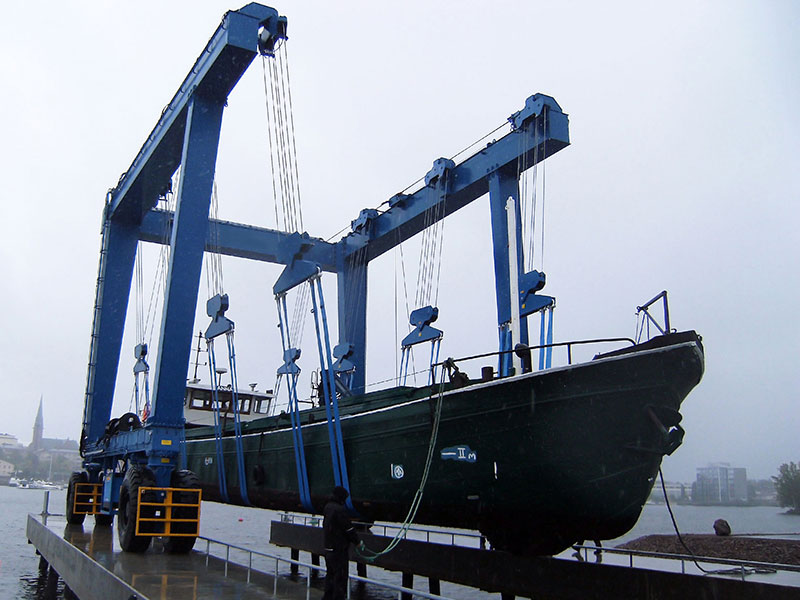A boat gantry crane is a type of lifting equipment specifically designed for handling ships and yachts in shipyards, docks and ship repair facilities. Its main function is to safely lift, transport and position ships for storage, maintenance or transfer to the water. These cranes are often used in environments where ships need to be frequently lifted out of or into the water.
The boat travel lift includes the following components: main structure, walking wheel set, lifting mechanism, steering mechanism, hydraulic transmission system, electrical control system, and the main structure is of this type. It can transfer ships with a height exceeding its height.
Main features of boat gantry crane
High load capacity: The boat travel lift is used to handle ships of various sizes, from small leisure boats to large yachts. Depending on the configuration of the crane, its lifting capacity ranges from a few tons to hundreds of tons.
Adjustable lifting mechanism: It has an adjustable lifting point that can be adapted to different hull shapes and ship sizes. This ensures even weight distribution and safe lifting during operation.
Mobility: A defining feature of mobile boat cranes is their ability to move on wheels or tracks. This enables the crane to transport vessels from one location within a dock or shipyard to another, providing flexibility and efficiency in the movement of vessels.
Precision Control: Mobile boat cranes are equipped with remote or cab-operated controls that provide precise maneuverability. The operator can control the speed and direction of the crane, ensuring safe operation of the vessel, especially in tight spaces.
Weather Resistance: Since these cranes are often used in outdoor environments, they are manufactured with materials and coatings that resist corrosion from salt water, UV exposure, and other environmental factors. This ensures the longevity and durability of the equipment.
Boat gantry cranes play a vital role in the marine industry, providing a versatile and efficient solution for handling vessels. Their adaptability, durability, and mobility make them an integral part of shipyards and docks around the world.








